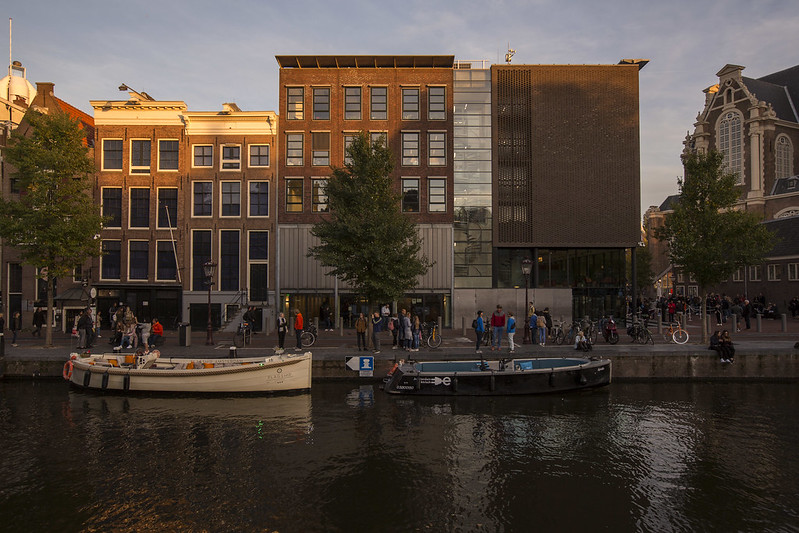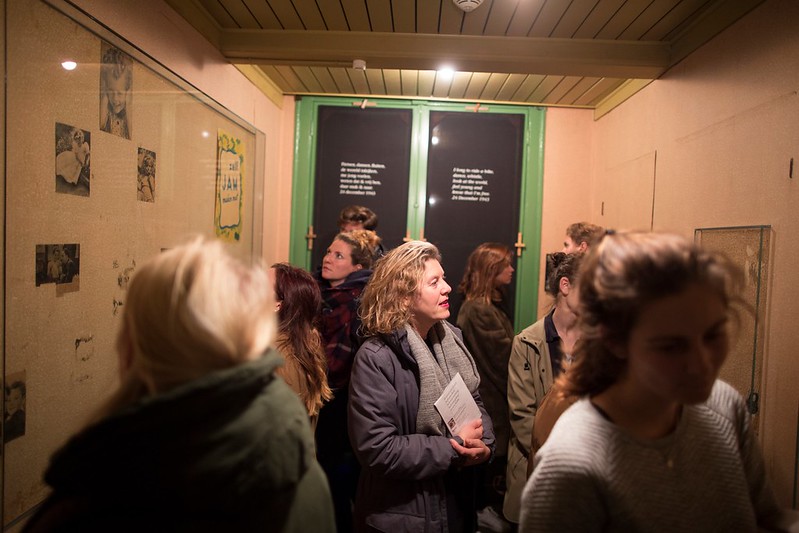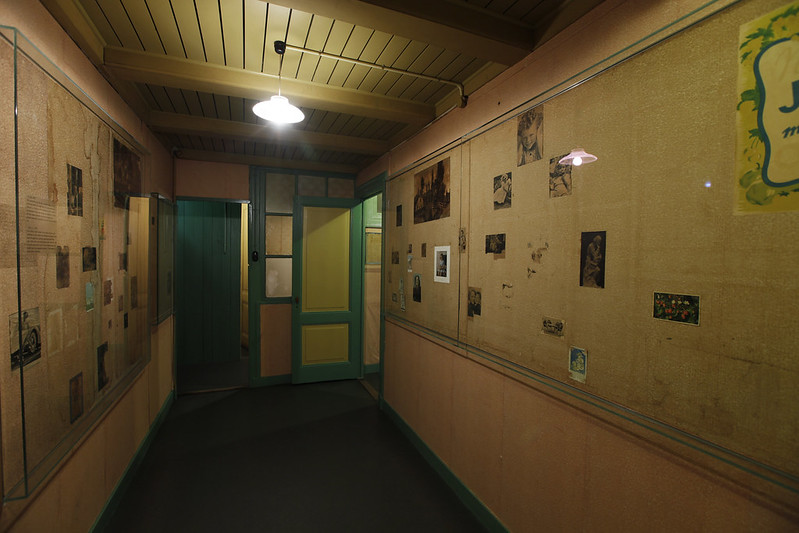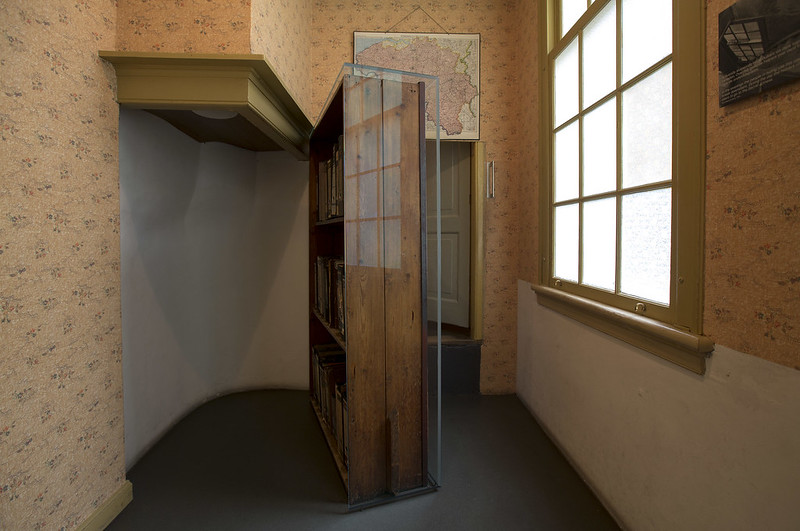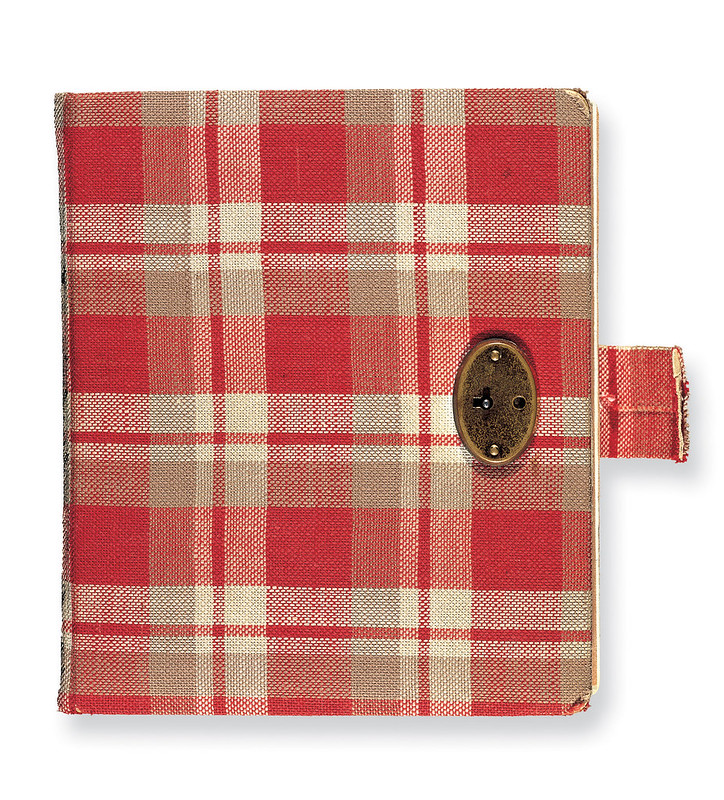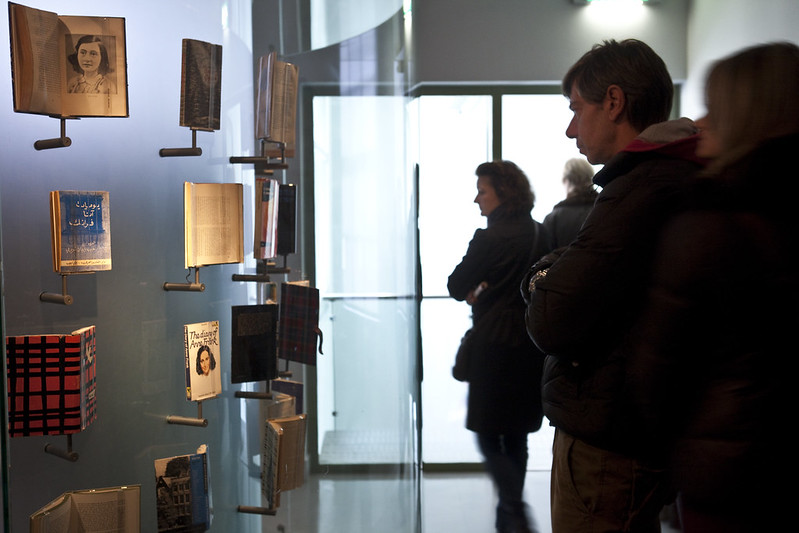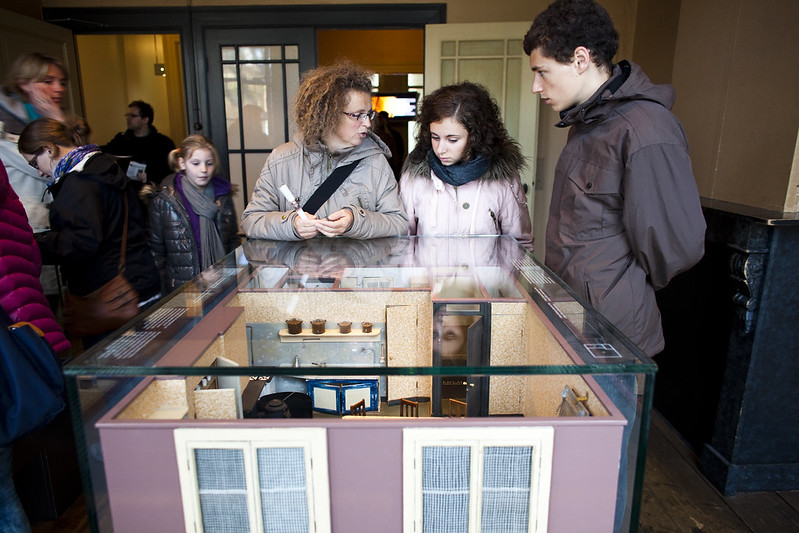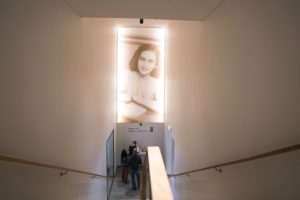Anne Frank House
Museum
Theme: Genocide and/or Mass Crimes

Address
Westermarkt 20
Country
Netherlands
City
Amsterdam
Continent
Europe
Theme: Genocide and/or Mass Crimes
Purpose of Memory
To commemorate the genocide against the Jewish community in Netherlands and to make Anne Frank’s story known.
Institutional Designation
Anne Frank House
Date of creation / identification / declaration
1960
Public Access
Free
UNESCO Connection
2009: The diary of Anne Frank is registered on UNESCO Memory of the World Register.
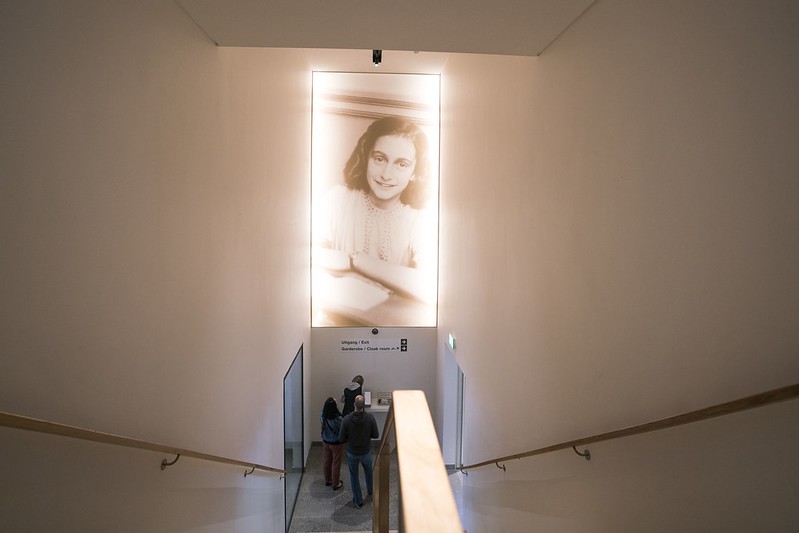
Location description
The museum is located in Amsterdam’s downtown, in the building where Anne Frank was with her family between 1942 and 1944. In the site, the reduced spaces where the eight people lived hiding in the annex of 263 Prinsengracht street can be visited. Through pictures, quotes, films and personal objects, the life conditions in the hiding place are recreated and works performed by people who helped them are explained. The museum displays the original objects of the house, Anne Frank’s diary and a collection of items related to her story.
Annelies Marie Frank, known worldwide as Anne Frank, was born in 1929 in Frankfurt, Germany. In 1934, her family, of Jewish origin, had to emigrate to the Netherlands to escape from the Nazi persecution. Otto Frank, Anne´s father, created in Amsterdam the company Opekta, that produced preservatives for jam and operated in 263 Prinsengracht street.
In the context of the World War II, the Netherlands were invaded by Nazi Germany in May, 1940- This occupation lasted until 1945, year of the end of the war-. Since then, Nazis started introducing a number of laws and regulations that made Jewish lives more and more difficult in the Netherlands. This way, Otto Frank lost control of his company and decided to build a hiding place in the annex of the building in 263 Prinsengracht street.
On June 6, 1942, the Franks moved to the hiding place where they stayed for over two years with the Van Pels family and the dentist Fritz Pfeffer. Six administrative employees of the Opekta company helped them, acting as liaison with the outside world and supplying food. On June 12, 1942, Anne received a notebook as birthday gift, where she started to write about her daily life and the experiences in the hideout.
Finally, on August 4, 1944, the Gestapo (the secret German police) attacked the annex of the 263 Prinsengracht building and arrested the eight inhabitants, who were first taken to the Westerbork transit camp and then, to the Auschwitz concentration camp, where Anne´s mother was murdered. In December 1944, Anne and her sister Margot were transferred to the Bergen-Belsen concentration camp, where they died of typhus in March, 1945.
During World War II, in the Netherlands, around 102,000 Dutch Jewish were killed, representing 75% of the Dutch Jewish population. This is the highest rate of murders to Jewish population in the entire Western Europe.
After the end of the war, in June 1945, Otto Frank returned to Amsterdam, where he learnt that he was the only survivor of the eight people in the hiding place. Miep Gies, one of the administrative employees who had helped them during their captivity, gave him Anne´s diary, which she had been able to recover after the Gestapo attack. In one note on March 29, 1944, the girl stated her will to publish her texts, since she had heard that a Dutch Government member proposed to publish letters and diaries as historical documents after the end of the war.
In 1947, Otto Frank published for the first time Anne´s diary, with the title Tales from the House Behind. The book sold out immediately and was republished several times. Finally, it was published with the title The diary of Anne Frank, and became a universal phenomenon for being the direct testimony of a girl on the horrors of World War II. Since its first edition, more than 30 million copies were sold and it was translated to over 50 languages. In time, Anne Frank’s diary has become a required reading in schools all over the world.
The building on 263 Prinsengracht street, where the hiding place was located, was about to be demolished after the war. However, thanks to the movement of a commission of citizens of Amsterdam, the historical site was saved. In 1957, the Anne Frank House Organization was established to preserve the hiding place. Finally, the building was restored and opened its doors to the public on May 3, 1960. The number of people who visit the museum is constantly growing, and at present, it reaches more than a million visitors per year. The Anne Frank Foundation, manager of the girl´s legacy, runs the museum, where people can visit the original spaces of the annex that operated as hiding place during the Nazi persecution. It also develops educational material on World War II, the Holocaust and anti-Semitism; and organizes workshops for young people and professionals. Finally, the Dutch foundation works with other associated organizations in Great Britain, Germany, the United States, Austria and Argentina, which propose a replica of the hiding places.
In the Netherlands, other memorial sites on the Holocaust were created, such as the National Holocaust Museum, inaugurated in Amsterdam in 2016.
